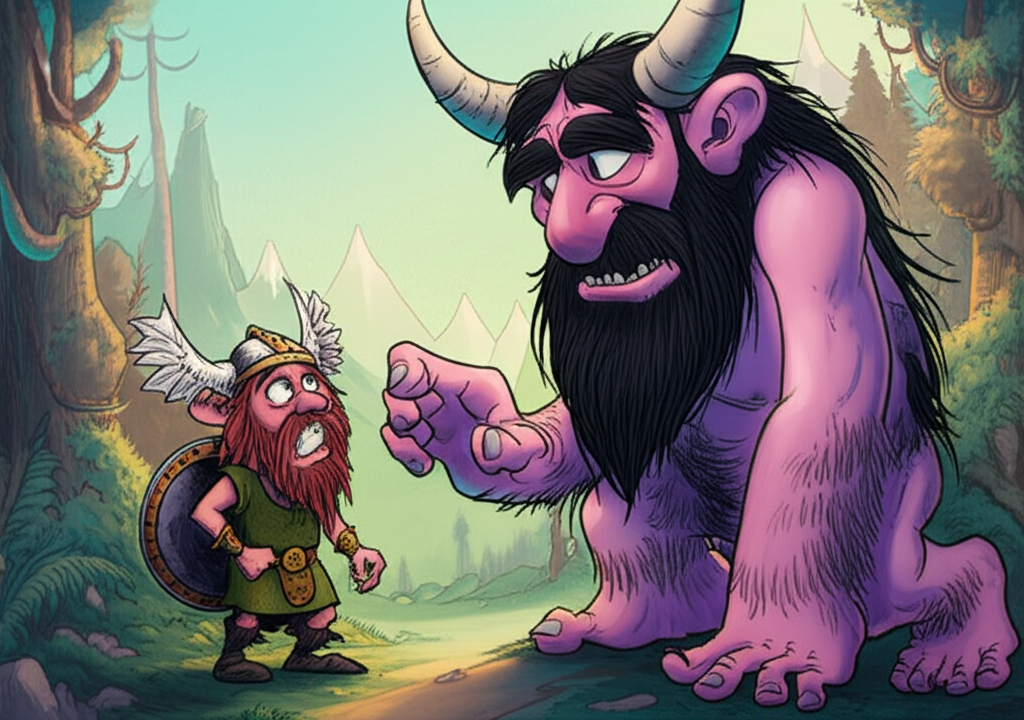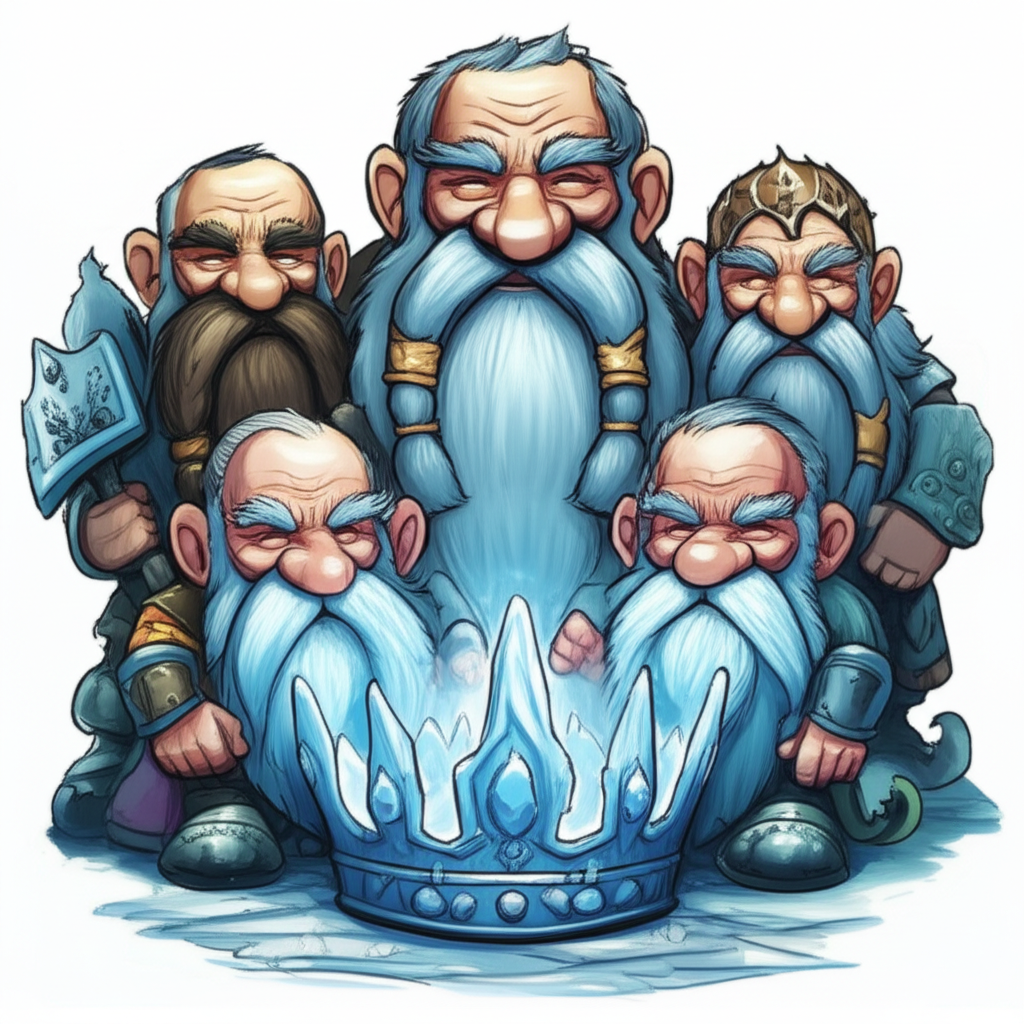
The windswept sagas and ancient verses of Norse mythology whisper tales of a world teeming with powerful beings, a cosmic tapestry woven with gods, heroes, and formidable giants. Among these, the Jotnar, the frost giants of Jotunheim, stand as colossal figures, embodiments of untamed nature and primal forces. The stories of their encounters with mortals in Midgard, the realm of humankind, are not accounts of verifiable events, but rather deeply ingrained narratives from a bygone era, passed down through generations by the ancient Norse people to explain the world around them and explore the human condition.
To understand these myths, we must journey back to the rugged landscapes and challenging climate of Scandinavia during the Viking Age and the preceding centuries. Life was a constant negotiation with the elements – harsh winters, unforgiving seas, and dense, ancient forests. In such an environment, the world was often perceived as a dynamic and sometimes perilous place, inhabited by forces both benevolent and terrifying. The Norse cosmology was a reflection of this reality, a tiered universe where the actions of gods like Odin and Thor were often in conflict with the immense, chaotic power of the Jotnar. These beings were not simply monsters; they were personifications of the raw, untamed aspects of nature that shaped their lives.
The Jotnar, often referred to as the frost giants, were depicted as beings of immense stature and formidable strength. Their very existence was intrinsically linked to the primordial cold and the wild, untamed wilderness. Their skin was said to be as rough as glacial ice, their eyes like chips of frozen sky, and their breath the biting chill of a winter storm. They dwelled in Jotunheim, a realm of perpetual frost and rock, a stark contrast to the more ordered realms of the gods and humans. Their symbolic attributes were many: they represented the chaotic, untamed forces of nature, the vast, indifferent power of the natural world that could both sustain and destroy. They embodied the primal fears of a people who lived at the mercy of the elements – the crushing weight of avalanches, the biting sting of frostbite, the overwhelming power of storms. They were also seen as ancient beings, existing before the gods themselves, a reminder of the world’s raw, untamed origins.
One such narrative, a vivid illustration of mortal interaction with these colossal beings, recounts a journey into the frigid heart of Jotunheim. Imagine a young warrior, perhaps named Thord, driven by a desperate need for a legendary artifact, or perhaps compelled by a boastful vow, venturing into lands where few mortals dared to tread. The air grows thin and sharp, the ground crunches with an unnatural frost, and the trees, if any exist, are gnarled and skeletal, cloaked in eternal ice. The silence is profound, broken only by the groan of glaciers and the mournful howl of the wind.
As Thord presses onward, the landscape itself seems to conspire against him. The very rocks appear to shift and groan, and the biting wind carries whispers that sound suspiciously like guttural voices. Then, from the swirling mist, a colossal figure emerges. This is no mere man, but a Jotnar, a being whose head scrapes the low-hanging clouds, whose limbs are like ancient oaks, and whose eyes gleam with a cold, ancient intelligence. The ground trembles with its every step. The Jotnar’s voice, when it speaks, is a rumble that shakes Thord’s very bones, a sound like the grinding of icebergs. It is not necessarily malicious in its intent, but its sheer power and alien nature are overwhelming. It might challenge Thord, not with malice, but with a test of wit or strength, reflecting the ancient interactions between these beings and the more ordered realms. Perhaps the Jotnar is guarding a passage, or possesses knowledge Thord seeks. The encounter would be a desperate struggle for survival, a testament to mortal resilience and ingenuity in the face of overwhelming, primal power. Thord, armed with courage and perhaps a touch of divine favor (as is common in these tales), would have to rely on his wits and his strength, not to vanquish the Jotnar through sheer force, but to outsmart it, to appease it, or to escape its chilling embrace. The narrative would focus on the tension, the fear, and the sheer audacity of a mortal standing before such an ancient and powerful entity.
The symbolism embedded within these stories is rich and multifaceted. The Jotnar, in their raw power and connection to the untamed wilderness, often represented the overwhelming forces of nature that ancient peoples had to contend with. Their encounters with mortals could symbolize the struggle for survival, the need for resourcefulness and courage in the face of adversity. They could also represent the chaotic, primal aspects of existence that the gods, representing order and civilization, were constantly striving to contain or manage. For the ancient Norse, tales of Jotnar might have served as cautionary tales about the dangers of venturing too far into the unknown, or as affirmations of human resilience and the ability to overcome seemingly insurmountable obstacles. They might have also reflected a deep respect, even awe, for the wild and untamed aspects of the world.
In the modern era, the Jotnar continue to captivate our imaginations. They have been reimagined in countless forms across literature, film, and video games. From the stoic, elemental beings in fantasy novels to the formidable antagonists in epic cinematic universes, their archetype of immense, primal power endures. In academic circles, these myths are studied as invaluable windows into the cultural beliefs, societal structures, and environmental understandings of ancient peoples. They offer insights into how early societies grappled with the mysteries of the cosmos and their place within it.
It is crucial to reiterate that these accounts are traditional stories, woven from the threads of ancient imagination and cultural understanding. They are not factual historical records nor are they meant to be interpreted as divine truths. As Muslims, we recognize that the sole Creator and Sustainer of all existence is Allah (SWT). He is the ultimate power, the source of all creation, and the only being worthy of worship.
These Norse myths, therefore, serve as a fascinating glimpse into the rich tapestry of human storytelling. They highlight our innate desire to explain the inexplicable, to personify the forces that shape our lives, and to explore the enduring themes of courage, resilience, and the relationship between humanity and the vast, mysterious world around us. The echoes of the frost giants, though rooted in ancient lore, continue to resonate, reminding us of the power of imagination and the enduring legacy of cultural heritage.





